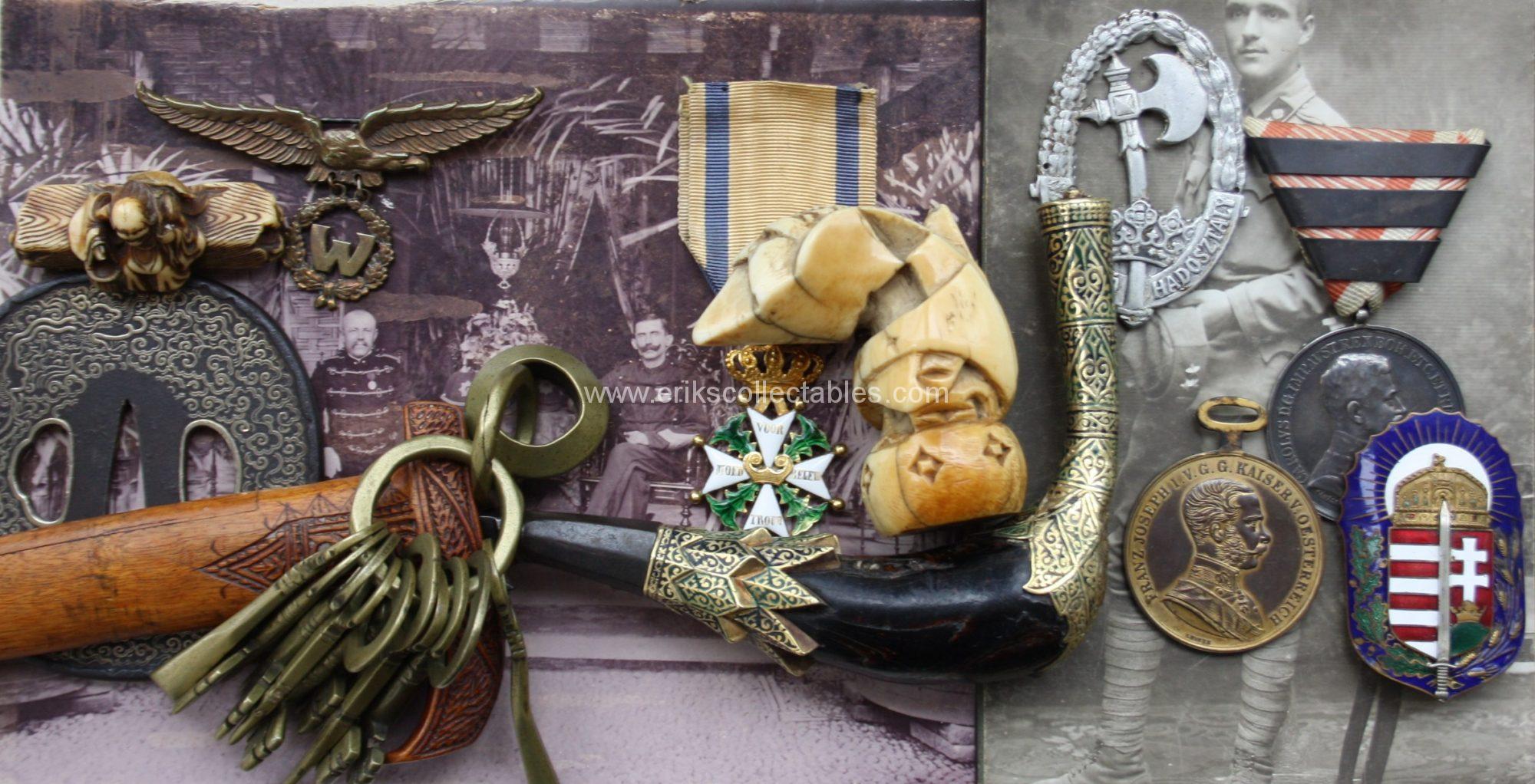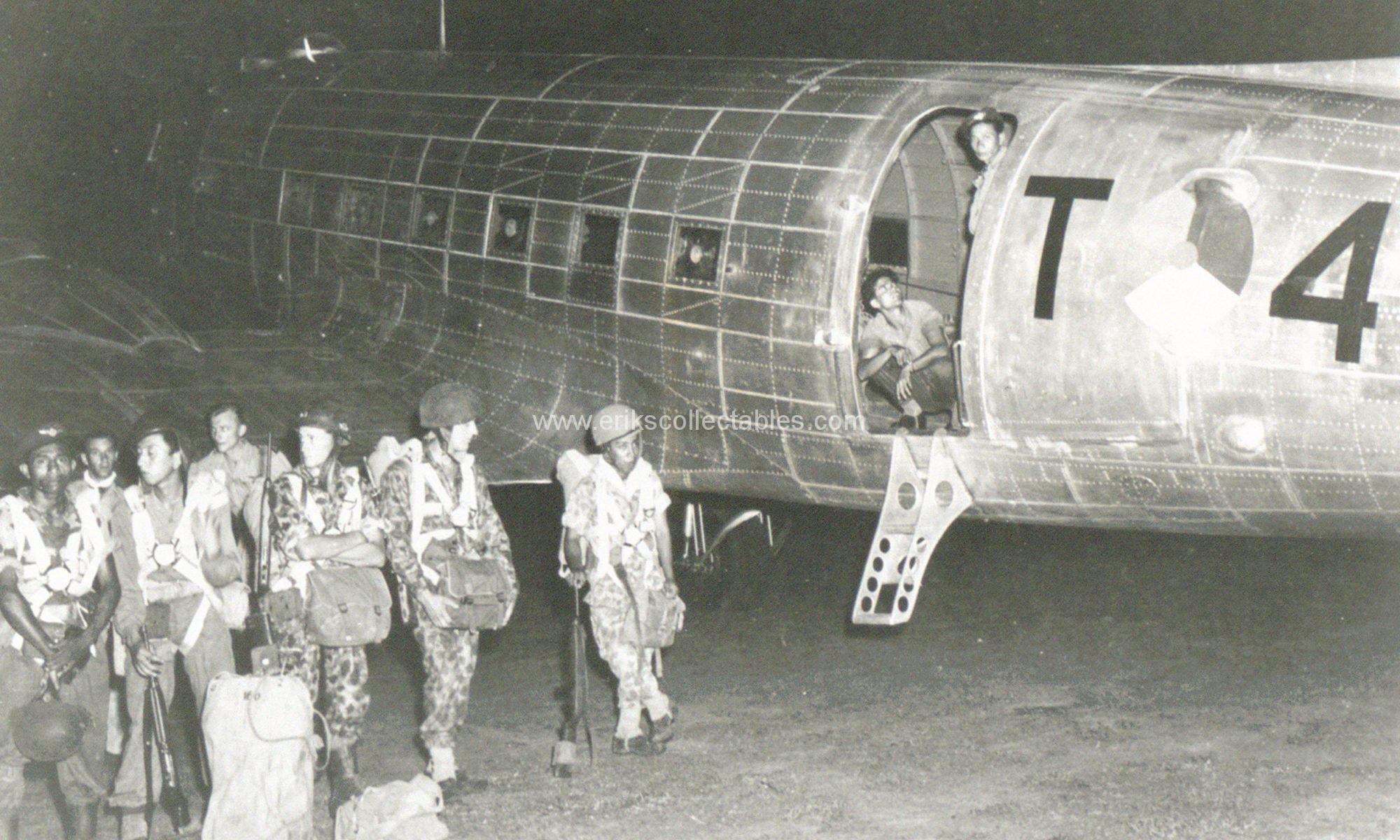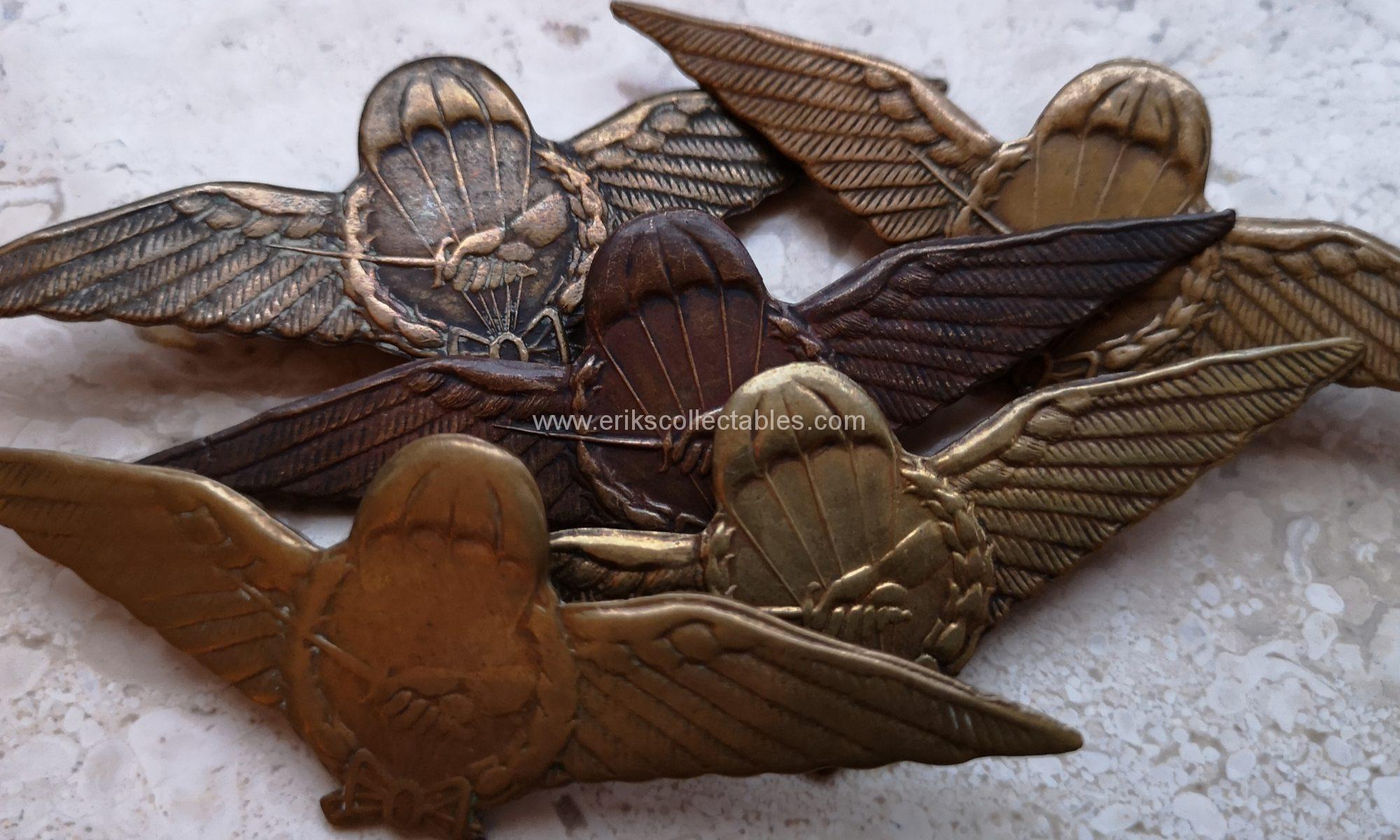The Netherlands East Indies Army Special Forces made four combat jumps in december 1948 and early 1949. A special wing to commemorate this was designed and worn in 1949/50.


Djokjakarta
The first and most important combat jump was part of the so called 2nd Politionele Actie. A large scale military action against the Indonesian army. The military aim was to reclaim Djokjakarta that was in Indonesian hands. The action started with a combat jump by the Para Battle Group of the Speciale Troepen on the airfield Magoewo close to Djokjakarta. The action started on December 19th 1948.

The preparations for “Operation Crow” as this large scale airborne operation was called had already started in january of 1948 when the 1st Para Company (app 250 men including the staff of the Airborne School, SOP) was combined with the 2nd Para Company (app 150 men) of the Korps Speciale Troepen. The unit was renamed in Para Battle Group (para gevechtsgroep of app 400 men) and led by Captain Eekhout. After the airfield was taken from the Indonesian army, planes with the commando’s of the Korps Speciale Troepen and 2 infantry units were flown in to take the whole city of Djokjakarta back.

The Airborne troops were transported in 16 Dakota C-47 planes and a total of 370 para’s made this combat jump. A very extensive description of the further action can be found in the sources (in Dutch).

Djambi
Shortly after this action the men had to make a second combat jump. This was already on December 29th 1948, only 10 days after the first combat jump. This time the action was on the Island of Sumatra to secure the oil fields of Djambi.

Rengat
Soon again a 3rd combat jump would be made during “Operation Mud (Modder)” in Rengat, again protecting oil fields in Sumatra. This time only the 1st Para Company would make the jump.
In a period spanning less than 3 weeks 3 combat jumps were made by approximately 370 men in total (not all men in all three jumps).

Gading
March 1949 was the last of four combat jumps. This one was on Java again and aimed at a large group of resistance fighters. After the jump it turned out the intelligence was outdated and the group had already left the region.

Qualification Wing – with golden laurel for combat jumps
The wing that was used as a qualification wing in 1947 was redesigned in 1949 for those who had particiapted in one or more of these combat jumps.


A golden laurel (as in the beret wing) was added to the basic design of the qualification wing. As with all badges in the Netherlands East Indies there were metal and cloth versions. The metal versions of the badges were only made and worn in the Netherlands East Indies Army in 1949 and early 1950. Of those only around 400 (all men of the para battle group, 370, that made combat jumps and the staff of the SOP that also participated in the combat jumps) were ever made.

Many para’s of Indonesian descent chose to remain in the new Indonesia but the wing could no longer be worn/shown as they were seen as signs of the colonial oppression! The metal version could no longer be worn in the Netherlands only cloth wings were officially allowed to be worn on the uniform. This type of metal wing is now very rare and highly collectable!

There are two versions of this metal wing the one shown below (both same type) is the larger of the two variations. It has been thinly painted (most often worn off) and it has a non standard closure on the back. This seems to be the official version.

The other type is in the Cordesius style both with the closure and the thicker enamel style painting that chips but does not wear down so much and a less shiny type of metal is used. It is much rarer so probably a privately purchased item.
The difference between these two wings can mainly be seen by the size and paint quality. And of course the type of closure. Below the standard type of closure that is used on the smaller version (not my collection).

Below a period photo’s of the metal wing for combat jumps being worn.

Here two versions of the cloth action wing, both from the estate of an officer of the 1st Para Company with thanks to the Castelein family for allowing to show them here! These badges were made and worn in the Indies and not after (the officer left the service upon return to the Netherlands).



Upon return to the Netherlands “standard” insignia were worn by all on the battle dresses. Here an example of such a wing from the same Castelein estate as the two other cloth wings shown before.



A miniature version of the action wing was also made in Indonesia (in metal). Here is an example worn by Lt. Castelein in 1950 after his return to civilian life.

If you have additional info please let me know so I can update my blog!

If you have an example of this wing for sale or trade please do contact me at info@erikscollectables.com with a photo and the relevant info!
Sources:
Museum Bronbeek, inventarisnummer: 2007/06/04-3/1
https://www.noviomagus.nl/h1.php?p=Gastredactie/Meijer/BronzenKruisdragers/TheoJacobs.htm
Main photo from the NIMH collection.
Topi Merah, S. Postma, 2022













